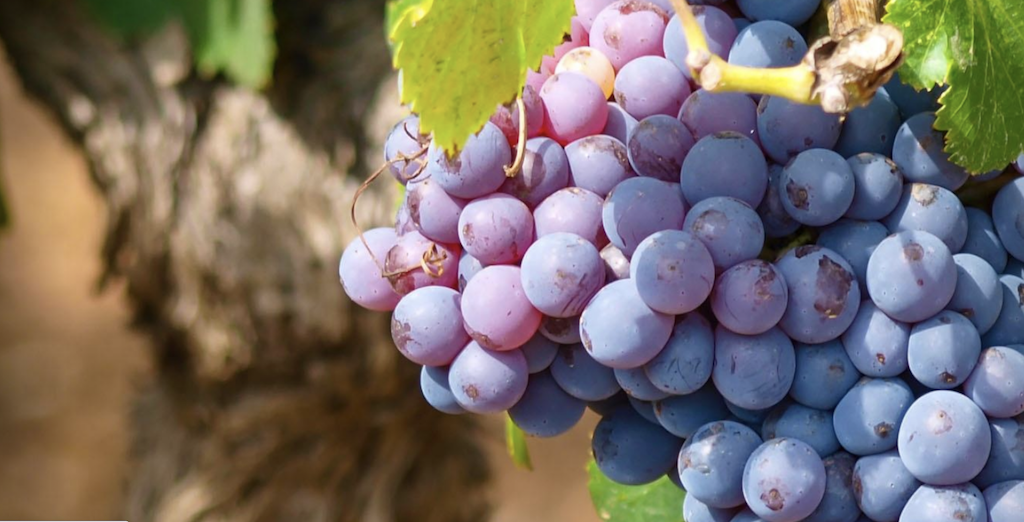Heritage Vineyard Project
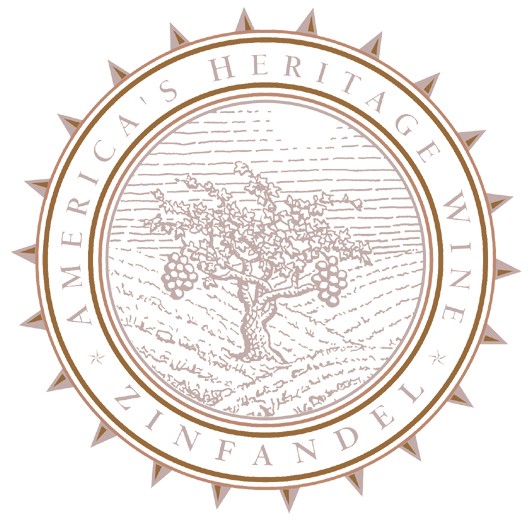 The Project
The Project
“The Heritage Vineyard brings all of us together as scientists, farmers, artists, and historians. Ultimately, this research will help us discover answers to some of the mysteries surrounding Zinfandel, and preserve the special qualities of the old vines for future generations.”
— Rebecca Robinson, Executive Director, ZAP
The Zinfandel Heritage Vineyard Project is an unprecedented collection of rare and famous Zinfandel vine cuttings grown throughout California. It was originally established at the University of California at Davis (UC Davis) Oakville Research Station in Napa Valley beginning in 1995.
At the time, acres planted in Zinfandel had swelled to 50,000 and the varietal was poised, but not prepared, to begin a renaissance. While Zinfandel wines had achieved a place among the world’s finest varietals, growers and vintners were unhappy with the selections of vines available commercially. The UC Davis Foundation Plant Services (FPS), which evaluates and virus-tests rootstock for commercial distribution, had only certified four selections of Zinfandel. Red Zinfandel wines had grown in popularity, but without additional rootstock to infuse some diversity, expansion of the varietal would be stalled.
ZAP & UC Davis partnered to create greater diversity for growers and research began on 90 selections from 50 vineyards in 14 counties, conducted in three phases at the Oakville Experimental Vineyard. A secondary outcome has been the preservation of Zinfandel vines from the oldest, historical, and premium producing vineyards.
The Zinfandel Heritage Vineyard Project has been a fruitful collaboration with a primary goal to provide superior Zinfandel selections to growers as the basis for future plantings. The initial release of 19 Zinfandel selections to nurseries was in 2009. Four more selections were named in 2014 – Lytton, Moore, Teldeschi, and George Zeni. Each represent a unique set of research data sourced from historic old vine plantings that are geographically diverse from the other selections, proven to make quality wine based on “small lot” productions and immediately recognizable in the marketplace.
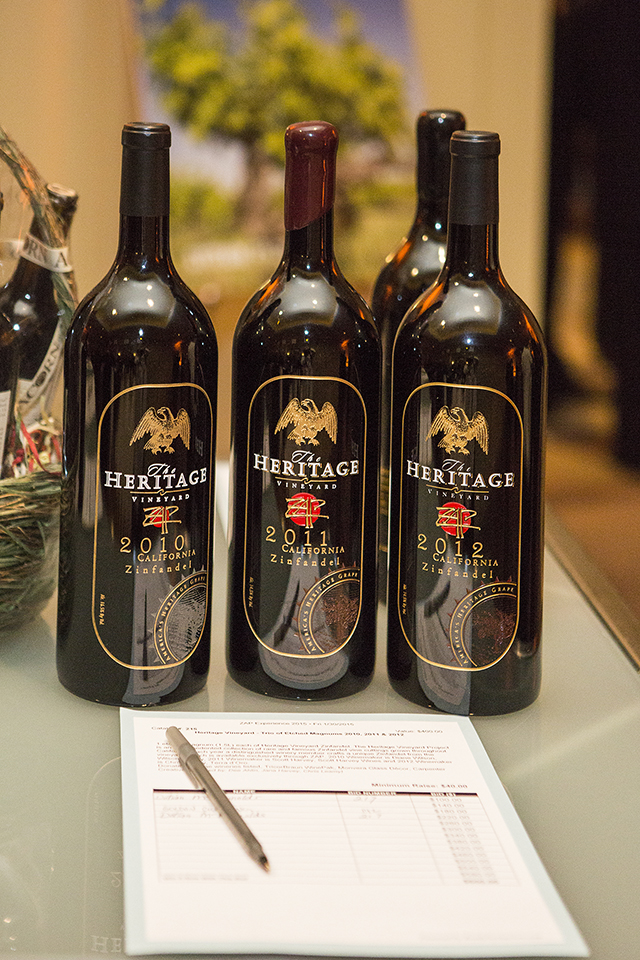 The Heritage Vineyard Wine
The Heritage Vineyard Wine
“We continue to learn much about the viticultural characteristics of these vines. Things such as berry size, cluster tightness, and ripening uniformity are all factors which have an impact on the quality of the vintage. Of course, the most important factor is wine quality which integrates all of these components, including color, tannin profile, and intensity of varietal character.”
– Jim Wolpert, Director Heritage Vineyard Research
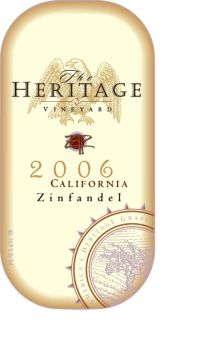
The Heritage Vineyard was originally established at the UC Davis Oakville Research Station in Napa Valley, California, to replicate the conditions that have given Zinfandel its reputation.
Each year, since 1997, ZAP selects a distinguished winery member to craft a unique Zinfandel vintage from the Heritage Vineyard. This provides a unique opportunity to produce wine from the collection of historic old vines, maintaining consistency in terroir and vineyard management. Comparing each vintage highlights in the purest way possible, the style of the winemaker.
The Heritage Vineyard Project has produced incomparable research and preserved old vine selections for future vineyard plantings. We have increased the number of Zinfandel selections now commercially available, complete with vineyard data and, most importantly, clean material is available for planting from these selections.
The Heritage Vineyard Project is now entering a new phase of experimentation. For the first time, a group of selections from the Phase 3 plantings has been harvested to produce small lot winemaking so vineyards can be compared side-by-side. This winemaking is being done thanks to our continuing collaboration with UC Davis. The results from this work will be shared with our membership in the coming years.
We hope to offer our Advocates new opportunities for tasting the fruits of these labors from the Heritage Vineyard Project in new and exciting guises.
Proceeds from the sale of the wine, which is available for tasting at many ZAP events and for purchase during the Annual Zinfandel Experience, has been used, in part, for the research and maintenance of the Heritage Vineyard. ZAP’s cumulative contribution to support the Heritage Vineyard Project has passed the $450,000 milestone, and is the largest grant from an independent organization focused on one specific winegrape varietal.
Heritage Vineyard Wines
2017 Heritage Wine | John Olney, Ridge Vineyards
2016 Heritage Wine | John Olney, Ridge Vineyards
2015 Heritage Wine | John Olney, Ridge Vineyards
2014 Heritage Wine | Joel Peterson, Ravenswood
2013 Heritage Wine | Joel Peterson, Ravenswood
2012 Heritage Wine | Chris Leamy, Terra d’Oro
2011 Heritage Wine | Scott Harvey, Scott Harvey Wines
2010 Heritage Wine | Diane Wilson, Wilson Family Winery
2009 Heritage Wine | Ted Seghesio, Seghesio Family Vineyards
2008 Heritage Wine | Tom Mackey, St. Francis Vineyard & Winery
2007 Heritage Wine | Joel Peterson, Ravenswood (Produced exclusively for ZAP’s auctions)
2006 Heritage Wine | Jerry Seps, Storybook Mountain Vineyards
2005 Heritage Wine | Bill Knuttel, Dry Creek Vineyard
2004 Heritage Wine | Kent Rosenblum, Rosenblum Cellars
2003 Heritage Wine | Paul Draper, Ridge Vineyards
2002 Heritage Wine | Ehren Jordan, Turley Wine Cellars
2001 Heritage Wine | Joel Peterson, Ravenswood
2000 Heritage Wine | Rod Berglund, Joseph Swan Vineyards
1999 Heritage Wine | Matt Cline, Cline Cellars (Now with Three Wine Co.)
1998 Heritage Wine | Robert Biale, Robert Biale Vineyards
1997 Heritage Wine | Nils Venge, Saddleback Cellars
The Start
“It’s our responsibility as vineyardists, winemakers, craftsmen, and “keepers of the flame,” that we seek out the purest and finest quality clones of Zinfandel in California, isolate them, nurture them, study them, and then possibly make them available commercially on a large scale, all to ensure that Zinfandel moves into the next millennium in its most superb incarnation.”
— Doug Beckett, Peachy Canyon Winery
At the outset of the project it was clear that there were very significant differences in the quality of the wines currently being produced and available to the consumer, despite the lack of variety among Zinfandel selections available to growers. This could be attributed to three things:
- Genetic material – Clones that originated through natural mutations which occurred in buds and expressed themselves in different shoots on a vine or different vines within a vineyard. These could be maintained as new selections if they were identified and vegetatively propagated.
- The growing environment – Terroir or soil type, slope and aspect, climate, sunlight, and other site factors could influence growth, ripening and final wine composition.
- Vine and wine management – Training and cropping levels, fermentation temperature, yeast and barrel aging, winemaking skill and experience, and equipment all could affect perceived quality.
UC Davis Viticulturist Dr. James Wolpert, along with the UC Davis Department of Viticulture and Enology and UC Extension Viticulturist Emeritus Amand Kasimatis understood that the most effective way to improve Zinfandel would be to go back to its origin to make selections for replication. This model had worked for other varieties but it wouldn’t be so simple for Zinfandel because the origins of the varietal were just becoming known.
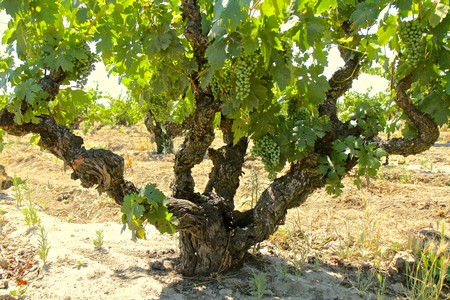 The Primitivo variety in Puglia, Italy, was found to be genetically identical to Zinfandel; however, Italians were sure it was not one of their traditional varietals. Additionally, no one organization had done much work to search for varietal variability. Zinfandel was found to be identical to the Croatian winegrape Crljenak Kaštelanski but the remaining vines discovered in the region were scarce and not found in commercial vineyards.
The Primitivo variety in Puglia, Italy, was found to be genetically identical to Zinfandel; however, Italians were sure it was not one of their traditional varietals. Additionally, no one organization had done much work to search for varietal variability. Zinfandel was found to be identical to the Croatian winegrape Crljenak Kaštelanski but the remaining vines discovered in the region were scarce and not found in commercial vineyards.
Along with Sonoma County Farm Advisor Rhonda Smith and Napa County Farm Advisor Ed Weber, Wolpert and Kasimatis took what they called “Zinfandel Safaris” in 1989 to more than 100 vineyards throughout California to collect selections for the Zinfandel Heritage Vineyard Project. The initial selections were based on a few criteria: vines had to be planted before 1930; carry small berries and loose clusters; and be free of visual “red leaf” symptoms, which could indicate leafroll or corky bark viruses.
Because Zinfandel is only believed to have been imported a few times within the last 160 years, it hasn’t had time to mutate significantly, and the base of initial variation is fairly small. However, the Zinfandel Heritage Vineyard Project has resulted in the release of 19 new Zinfandel selections, and the Project continues.
To read the complete research project, including the history of the Oakville Experiemental Vineyard phase development: click here to download.
“It’s our responsibility as vineyardists, winemakers, craftsmen, and “keepers of the flame,” that we seek out the purest and finest quality clones of Zinfandel in California, isolate them, nurture them, study them, and then possibly make them available commercially on a large scale, all to ensure that Zinfandel moves into the next millennium in its most superb incarnation.”
— Doug Beckett, Peachy Canyon Winery
News and Updates
Zinfandel Advocates & Producers Announces Four New Named Zinfandel Selections from ZAP Heritage Vineyard Project
San Francisco, CA (November 25, 2014) For the first time in 24 years, four new Zinfandel selections have been named by authoritative experts from UC Davis and Zinfandel Advocates and Producers (ZAP) Heritage Vineyard Project, a collaboration between ZAP and UC Davis, marking the culmination of 17 years of research to date. The four named Zinfandel vineyard selections are Lytton, Moore, Teldeschi, and George Zeni. Each represent a unique set of research data sourced from historic old vine plantings that are geographically diverse from the other selections, proven to make quality wine based on “small lot” productions and immediately recognizable in the marketplace.
Research Articles
Living in Zinfanland – In Search of Zinfandel by Rod Byers (Fall 2009)
Old Vine Zinfandel by Rod Byers (Spring 2009)
Back to the Future Research on Zinfandel: Phase 3, On the Road Again (Summer 2008)
Back to the Future Research on Zinfandel: Stage is Set for New Phase (Summer 2007)
Out of the Hothouse by Morgan Guy Twain-Peterson (Winter/Spring 2006)
2005 Flights, An Event Recap by Edie DeAvila (April 2005)
Book Review – Zinfandel, A History of a Grape & Its Wine (January 2005)
Heritage Vineyard Update (April 2003)
Looking for Zin in Croatia (January 2001)
The Perfect Project (July 2001)
Heritage Vineyard Update (April 2001)
Heritage Vineyard Label (January 2001)
Heritage Vineyard Update (October 2000)
Heritage Vineyard Update (January 2000)
Zinfandel & Plavac Mali (1999)
Crushing Our Heritage (July 1998)
